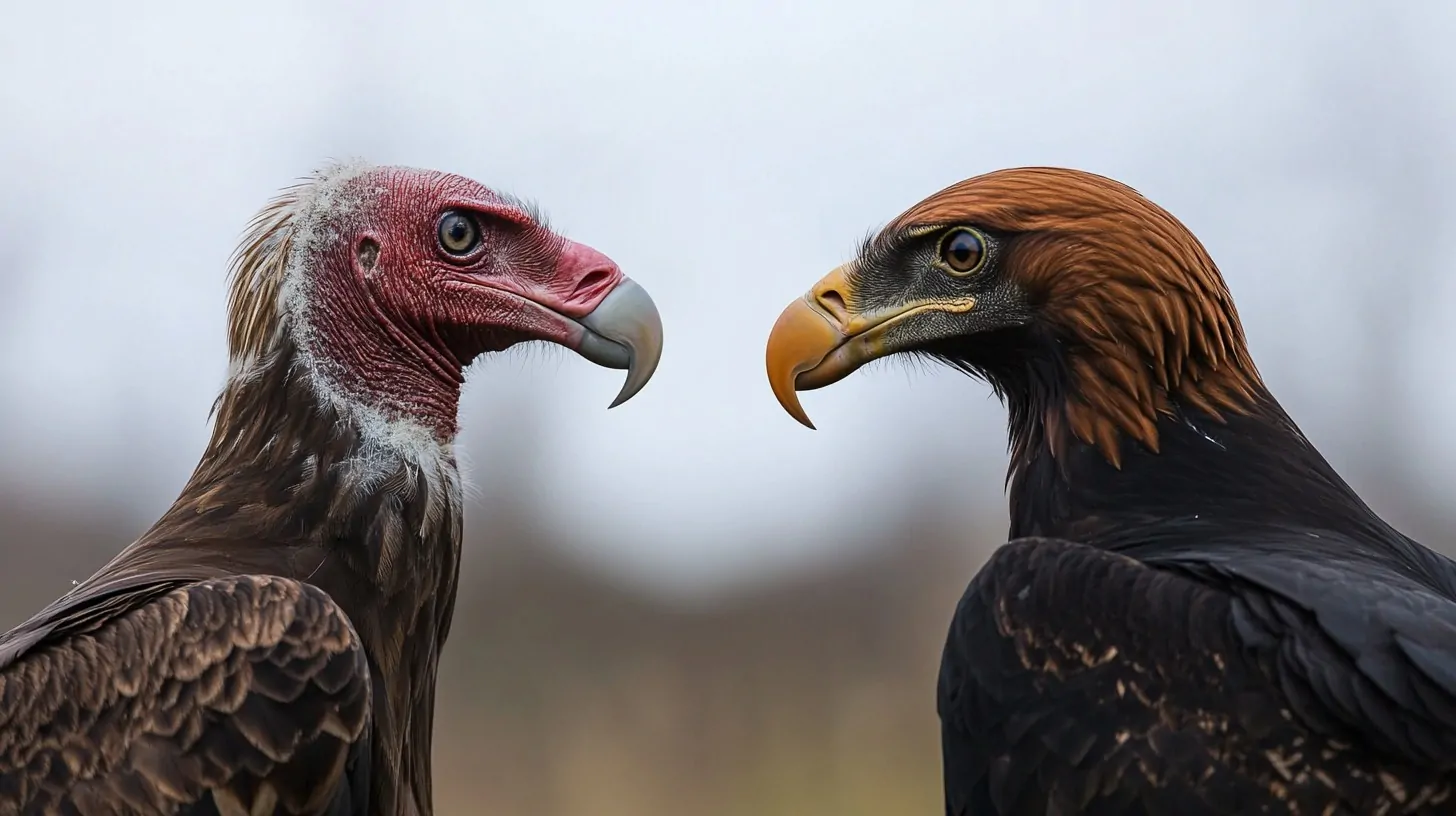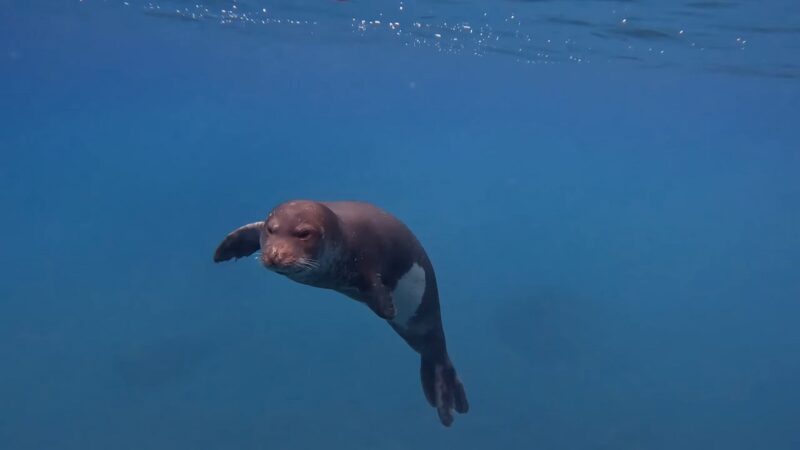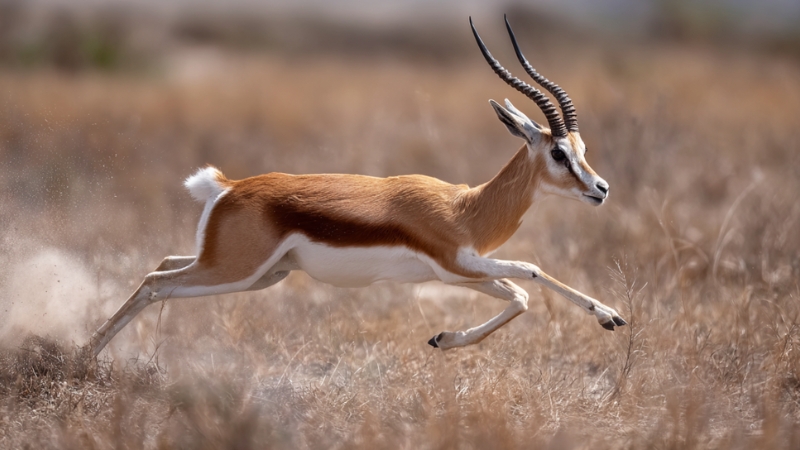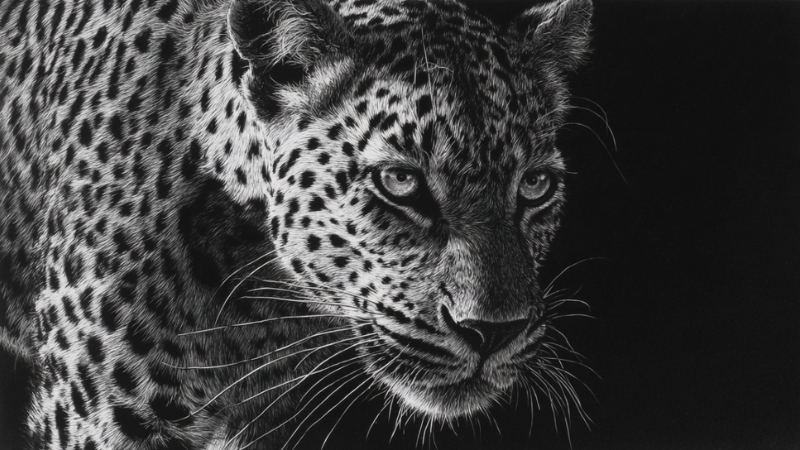Many people confuse vultures and buzzards, but they are completely different birds with unique traits. Vultures are built for scavenging, while buzzards are skilled hunters. Their physical features, behaviors, and roles in nature set them apart in ways that go beyond looks.
This article breaks down the key differences between vultures and buzzards, giving you a clear picture of how they live, hunt, and survive in the wild.
| Aspect | Vultures | Buzzards |
|---|---|---|
| Taxonomy | Old World (Accipitridae), New World (Cathartidae) | Accipitridae |
| Geographic Distribution | Africa, Europe, Asia, Americas | Europe, Asia, Africa |
| Head Appearance | Bald or sparsely feathered | Fully feathered |
| Beak | Large, strong, hooked | Smaller, hooked |
| Wings | Very large wingspan for soaring | Broad wings for maneuvering |
| Feet | Weaker grip, blunt talons | Strong grip, sharp talons |
| Diet | Primarily carrion | Live prey |
| Social Behavior | Often social | Generally solitary or in pairs |
| Sense of Smell | Highly developed in New World vultures | Less developed |
| Lifespan | Up to 30 years | 12–20 years |
Table of Contents
ToggleKey Differences Between Vultures and Buzzards
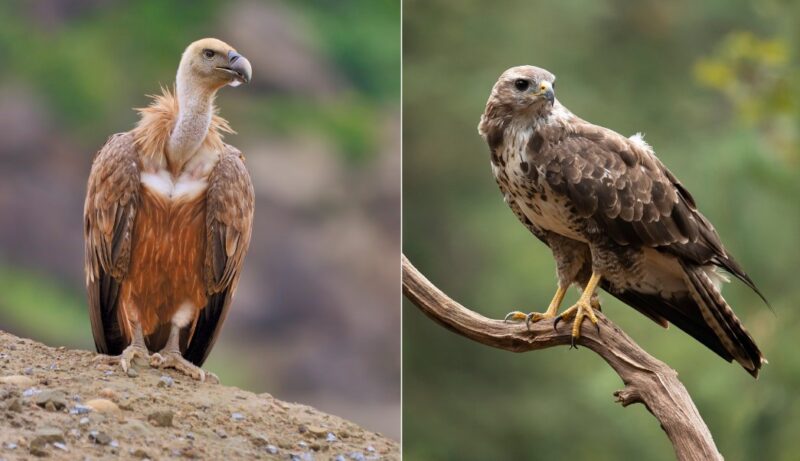
The differences between vultures and buzzards extend to their diet, physical traits, and behaviors. Vultures are primarily scavengers, feeding on carrion with the help of keen senses and specialized adaptations.
Buzzards, in contrast, are active predators that hunt live prey using strong talons and sharp vision. Vultures thrive in open areas with vast expanses for soaring, while buzzards prefer regions with perches and cover for stalking their prey.
These distinctions make each bird in its ecological role, contributing differently to their respective environments.
Taxonomy and Classification
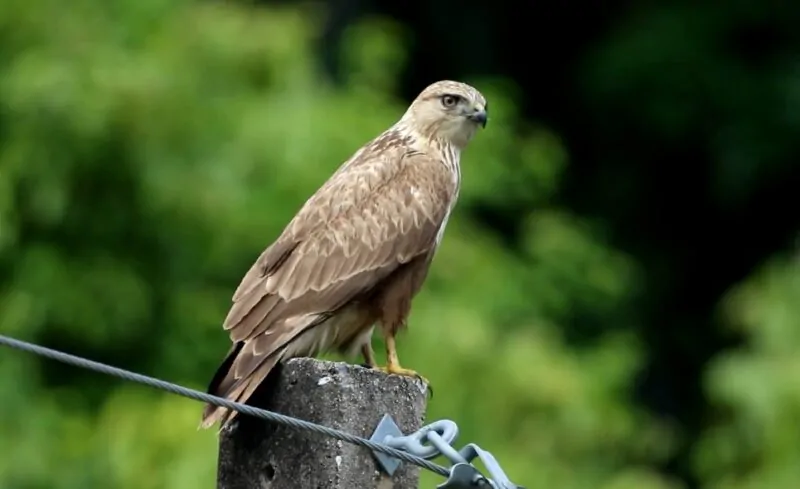
Vultures
Vultures are classified into two main groups based on their geographical distribution:
- Old World Vultures: Belong to the family Accipitridae, which also includes eagles, hawks, and kites. They are found in Africa, Europe, and Asia.
- New World Vultures: Part of the family Cathartidae, native to North and South America.
Buzzards
Buzzards are medium to large birds of prey within the family Accipitridae. In Europe and Asia, the term “buzzard” refers to species in the genus Buteo, known for their broad wings and robust bodies.
| Classification Level | Vultures | Buzzards |
|---|---|---|
| Kingdom | Animalia | Animalia |
| Phylum | Chordata | Chordata |
| Class | Aves | Aves |
| Order | Accipitriformes | Accipitriformes |
| Family | Accipitridae (Old World), Cathartidae (New World) | Accipitridae |
| Genus | Various | Buteo |
| Common Regions | Africa, Europe, Asia, Americas | Europe, Asia, Africa |
Geographic Distribution
The regions where vultures and buzzards are found help in distinguishing between them.
The habitats of vultures and buzzards highlight their distinct lifestyles and ecological niches. Vultures thrive in open areas such as deserts, high mountains, and lowland forests.
Old World vultures are commonly found across Africa, Europe, and Asia, while New World vultures inhabit the Americas, often seen along rocky coasts and sea cliffs.
Their large wingspans enable them to soar for hours over vast territories, searching for food with minimal energy expenditure.
Buzzards are often associated with woodlands, farmland, and open meadows, where they find ample opportunities to hunt. They are particularly adapted to environments with plenty of perches for spotting prey.
In Europe, the common buzzard (Buteo buteo) is a familiar sight in the countryside, utilizing its agility and keen vision to hunt in areas with diverse vegetation. Buzzards are also present in mountainous regions, where they take advantage of the terrain to ambush prey.
Why North and South America Lack True Buzzards
Buzzards are common in Europe, Africa, and Asia but do not exist in the Americas. When settlers arrived in North America, they mistakenly called vultures “buzzards,” leading to confusion that still exists today. Since hawks and eagles dominate the hunting niche in the Americas, true buzzards never spread there, leaving a noticeable gap in the bird of prey hierarchy.
Physical Characteristics

While both are large birds of prey, vultures and buzzards have distinct physical features, like hawk and falcon.
Vultures and buzzards exhibit distinct physical differences, particularly in their head, beak, wingspan, and feet.
Vultures often have bald or minimally feathered heads, a feature that helps them stay clean while feeding on carrion.
Their beaks are strong, heavy, and hooked, adapted for tearing through flesh. They also possess very large wings designed for soaring on thermal currents, enabling them to cover vast distances with minimal effort.
Their feet, however, have a weaker grip with blunt talons since they primarily feed on dead animals and do not need to capture live prey.
In contrast, buzzards have fully feathered heads, providing insulation and protection.
Their beaks, while still hooked, are smaller and less robust compared to those of vultures. Buzzards have broad wings that are ideal for soaring and maneuvering during hunting.
Unlike vultures, their feet are equipped with strong talons, which are designed for capturing and holding live prey, reflecting their more active predatory lifestyle.
| Trait | Vultures | Buzzards |
|---|---|---|
| Head Covering | Bald or sparsely feathered | Fully feathered |
| Beak Size | Large and heavy | Smaller and lighter |
| Wingspan | Very large | Broad but smaller than vultures |
| Talons | Blunt and weak | Sharp and strong |
| Primary Diet | Carrion (dead animals) | Live prey (rodents, birds, reptiles) |
Why Vultures and Buzzards Are Often Confused in Different Countries
In North America, the word “buzzard” is mistakenly used to describe vultures, even though they are not related. Early European settlers gave vultures this name because they looked similar to the buzzards they knew from back home. This confusion still exists today, with many Americans calling turkey vultures “buzzards” even though real buzzards are a type of hawk.
In the UK and other parts of Europe, the word “vulture” only refers to the true scavenging species, while buzzards are seen as separate birds of prey. This regional mix-up makes it harder for people to understand the actual differences between them.
Feeding Habits
Vultures and buzzards have fundamentally different dietary preferences that reflect their ecological roles and physical characteristics. Vultures are primarily scavengers, relying on carrion as their main food source.
With their exceptional eyesight and, in some species like the turkey vulture, an acute sense of smell, they can locate decomposing animals from great distances. Their role in ecosystems is critical, as they clean up dead animals and prevent the spread of diseases.
Some vultures, such as the palm nut vulture, have adapted to include items like oil palm fruit in their diets, demonstrating their versatility in specific habitats.
Buzzards, on the other hand, are active predators that focus on hunting live prey, including rodents, small mammals, and birds. Their strong talons and sharp beaks make them highly effective hunters. While they occasionally consume carrion, buzzards typically prefer fresh kills. This opportunistic but predatory approach allows them to adapt to varying prey availability in different environments.
How Buzzards Take Advantage of Roadkill
Buzzards are hunters, but they are not above eating roadkill. Unlike vultures, they do not have the adaptations needed to find carrion from far away. Instead, they spot it while flying low over roads or fields. Buzzards often feed on dead animals near highways, putting them at risk of being hit by cars.
Behavior and Ecology
Vultures
- Social Behavior: Often seen in large groups, especially when feeding or roosting.
- Flight Patterns: Soar on thermals with minimal wing flapping, conserving energy over long distances.
- Nesting Habits: Nest on cliffs, tall trees, or even on the ground depending on the species.
Buzzards
- Territoriality: Generally solitary or found in pairs, maintaining and defending a specific territory.
- Flight Patterns: Combine soaring with flapping flight, especially when hunting or displaying.
- Nesting Habits: Build nests in trees or on cliff ledges, using sticks and foliage.
Why Their Flight Styles Are So Different
Vultures rely on warm air currents called thermals to stay in the sky without flapping much. Their massive wings and lightweight bodies let them glide for hours while looking for food. This energy-saving method helps them cover huge distances with little effort.
Buzzards, on the other hand, mix soaring with active wing flaps. They need more control over their movements since they hunt live prey. Their shorter, broader wings let them make quick turns and dive when they spot something moving on the ground. Unlike vultures, they spend more time perching and scanning their surroundings instead of constantly soaring.
Sensory Abilities

An interesting distinction between vultures and buzzards lies in their sensory capabilities.
Vultures possess excellent eyesight, allowing them to spot carrion from high altitudes. In addition to their keen vision, New World ones, such as the turkey vulture, have a highly developed sense of smell, which enables them to detect gases released by decomposing animals.
Buzzards, on the other hand, also have sharp vision, which they use to detect the movement of prey on the ground while in flight.
Reproduction and Lifespan
@sasanamir [BUTEO BUTEO] – Common buzzards facts ⬇️ The common buzzard (Buteo buteo) is widely distributed across Europe, parts of Asia, and North Africa. They typically inhabit woodlands, farmland, and open countryside, favoring areas with plenty of perches. They are medium to large birds of prey, measuring 45 to 55 cm (18 to 22 inches) in length with a wingspan of 110 to 130 cm (43 to 51 inches). Their plumage varies from dark brown to light, often with white and buff markings. Nesting and breeding: They typically breed from late winter to early spring, laying 2 to 4 eggs in large nests built in trees or on cliffs. #buteobuteo #commonbuzzard #mäusebussard #sasanamir ♬ Originalton – Sasan Amir
Vultures
- Breeding: Often lay one or two eggs per season.
- Incubation: Both parents typically share incubation duties.
- Lifespan: Can live up to 30 years in the wild, longer in captivity.
Buzzards
- Breeding: Lay between two to four eggs.
- Incubation: The female usually incubates while the male provides food.
- Lifespan: The average lifespan is around 12 to 20 years in the wild.
Bottom Line
While vultures and buzzards may appear similar at first glance due to their size and soaring flight, they are distinct birds with different roles in the ecosystem.
Vultures are specialized scavengers essential for cleaning up carrion and preventing the spread of diseases.
Buzzards are versatile predators that help control populations of small mammals and other prey. Recognizing these differences enhances our understanding and appreciation of these remarkable birds.

